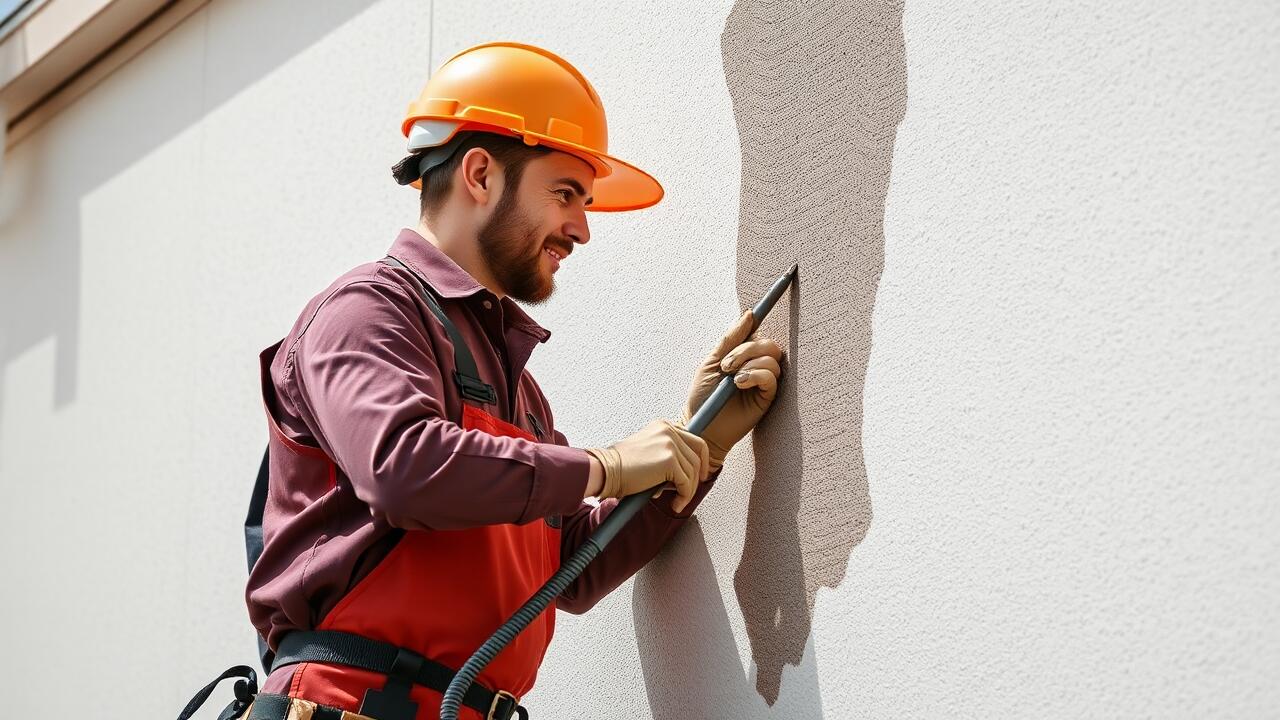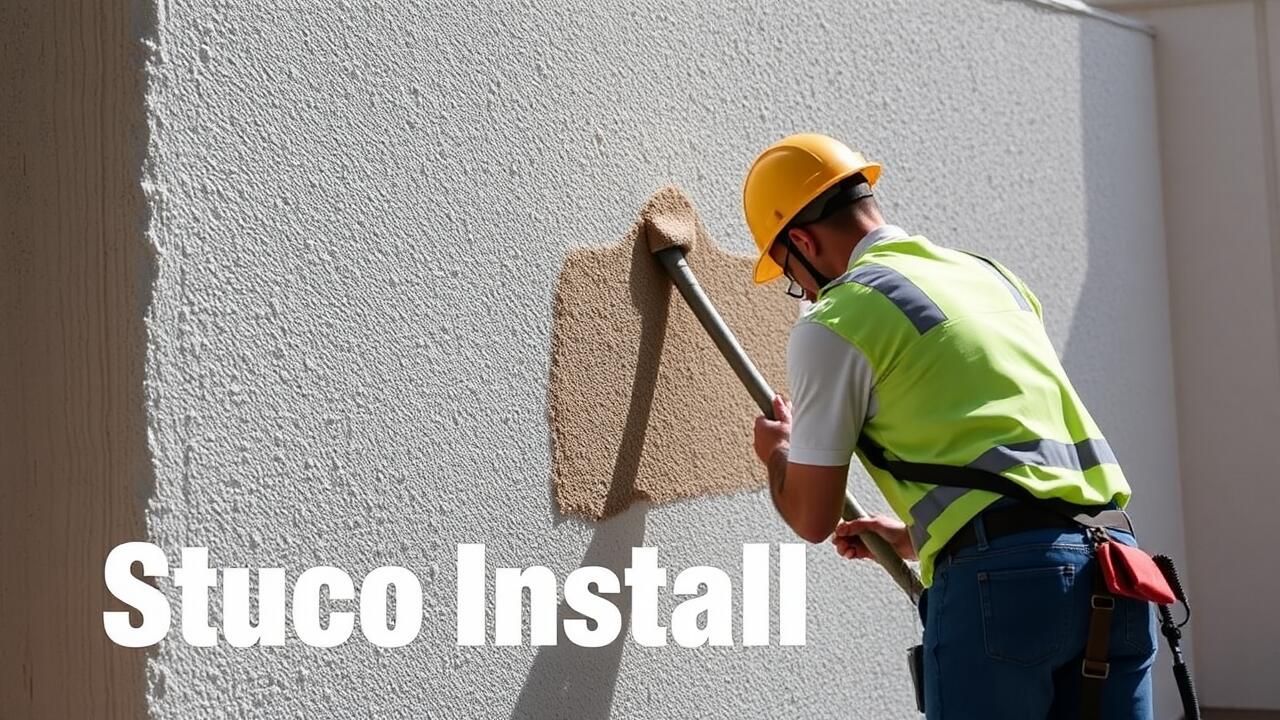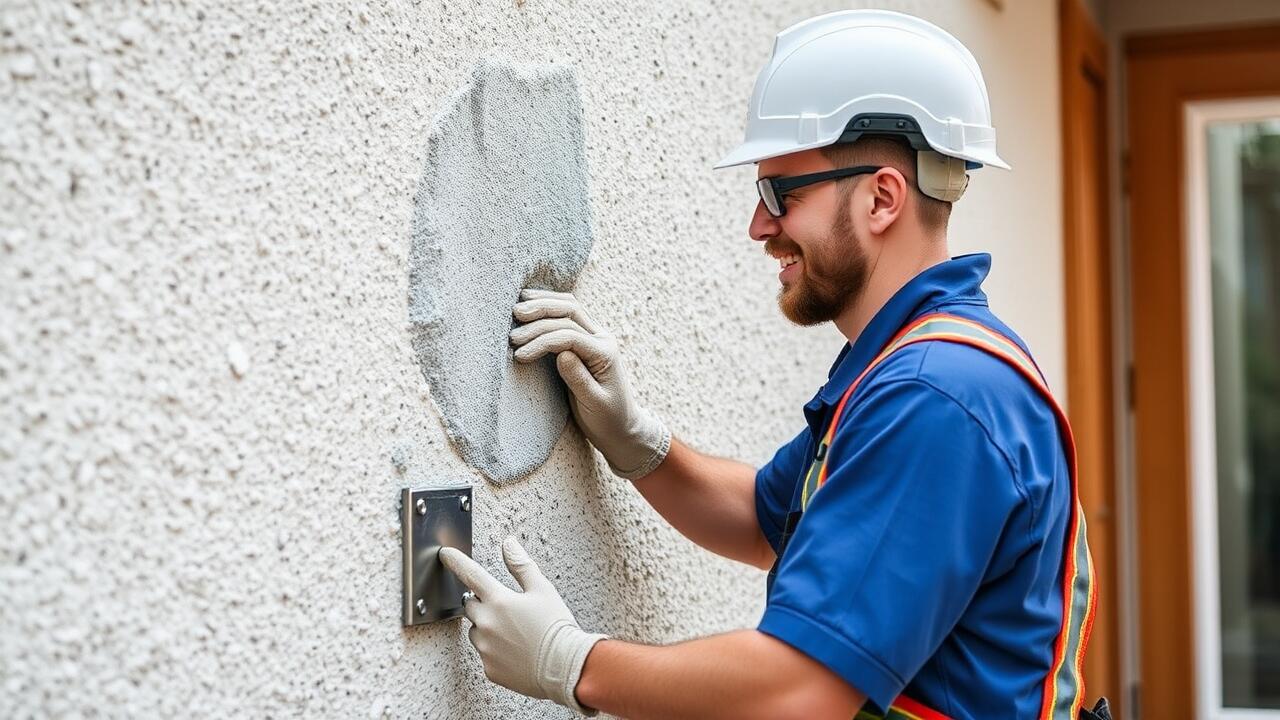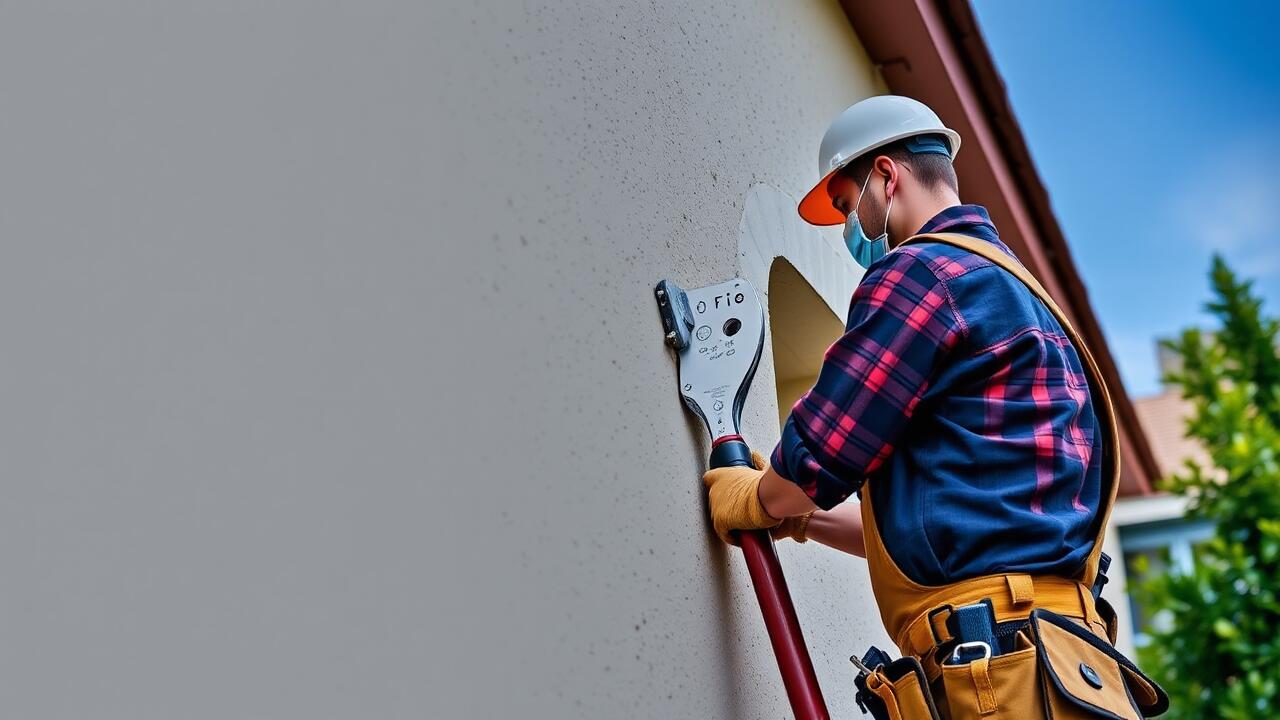
Maintenance Tips for Stucco in Marine Environments
Regular maintenance of stucco finishes is crucial in marine environments due to the corrosive nature of saltwater and moisture-laden air. Homeowners should consider periodic inspections to identify any signs of wear or damage, especially around joints and seams. Cleaning the stucco surface with a mild detergent and water can help prevent the buildup of salt and grime. Sealing the stucco with a high-quality, breathable sealant adds an extra layer of protection against moisture intrusion.
When investing in stucco for coastal areas, it’s beneficial to work with experienced professionals. Van Nuys, Los Angeles Stucco Installation offers expertise in selecting materials suitable for harsh conditions. Proper installation techniques, alongside maintenance, are vital for ensuring the longevity of the finish. Homeowners should be proactive in addressing issues like cracks or discoloration promptly to maintain the appearance and structural integrity of their stucco.
Best Practices to Ensure Longevity
Proper installation techniques significantly enhance the longevity of stucco finishes in coastal environments. Using high-quality materials is essential to withstand exposure to salt, moisture, and varying temperatures. A breathable mix that allows vapor to escape reduces the risk of trapped moisture, which can lead to cracking and deterioration. Ensuring that the base coat is applied uniformly creates a strong foundation for the finished surface, preventing issues down the line. Local expertise, such as Reseda, Los Angeles stucco installation, can further optimize application methods suited to the coastal climate.
Regular maintenance also plays a crucial role in extending the life of stucco finishes. Cleaning the surface periodically prevents the build-up of algae and salt deposits that can compromise its integrity. Inspecting joints and seams for cracks allows for timely repairs, minimizing the potential for more extensive damage. Applying a water-repellent sealant provides an additional layer of protection without compromising the stucco's breathability. Keeping gutters clean and ensuring proper drainage around the foundation helps direct water away from the stucco surface, contributing to its durability.
Common Issues with Stucco Finishes
Stucco finishes, while popular for their aesthetic appeal and durability, can encounter specific challenges in coastal environments. High humidity and salty air can lead to moisture intrusion, which may compromise the integrity of the stucco over time. Fungal growth and efflorescence often present themselves in areas where water has penetrated the surface. Homeowners must remain vigilant for cracks and deterioration, as these can escalate quickly if left untreated.
In locations like Encino, Los Angeles, where stucco installation is common, it’s crucial to understand the specific environmental factors that contribute to these issues. Regular inspection and repair of exposed areas can mitigate long-term damage. Proper sealing and waterproofing can help stave off potential problems, ensuring that the stucco remains a viable option for exterior finishes in coastal settings.
Identifying and Addressing Problems
Identifying issues with stucco finishes in coastal regions often involves looking for signs of wear and damage. Salt air can lead to surface erosion, while moisture accumulation may result in mold or mildew growth. Cracks in the stucco surface can develop due to temperature fluctuations and settled building foundations, making regular inspections crucial for early detection. In regions like San Pedro, Los Angeles, stucco installation gained popularity due to its aesthetic appeal and durability. However, without proper maintenance, these installations remain susceptible to the harsh coastal climate.
Addressing problems promptly can prevent minor issues from escalating into significant repairs. If any cracking or flaking is observed, it’s essential to assess the extent of the damage. Minor cracks may be filled with a suitable sealant, while larger fissures could require patching or resurfacing. Regular cleaning can help mitigate mold growth and salt build-up. Homeowners in San Pedro, Los Angeles, should also consider engaging professional services for thorough inspections and repairs, ensuring that their stucco remains in optimal condition amidst coastal challenges.
Comparing Stucco to Other Exterior Finishes
Stucco stands out as a preferred choice for many homeowners in coastal areas. The material offers a unique combination of aesthetic appeal and durability, making it well-suited for environments that experience high humidity and salt exposure. When comparing stucco to materials like vinyl siding or wood, it becomes evident that stucco provides better resistance against moisture-related issues. Many homeowners appreciate its ability to maintain structural integrity while presenting a variety of textures and colors to match their design preferences.
In regions like Westchester, Los Angeles, stucco installation results in finishes that not only enhance curb appeal but also withstand the rigors of coastal weather. Unlike other exterior finishes, stucco does not warp or fade as easily under harsh sun and salt conditions. The insulating properties of stucco contribute to energy efficiency as well. While options like brick or stone also offer longevity, they often come at a higher cost and demand more extensive maintenance in the long run.
Advantages of Choosing Stucco
Stucco finishes offer numerous benefits, particularly in coastal environments where resilience is essential. Their cement-based composition provides excellent resistance to moisture and salt, which helps to mitigate potential damage caused by harsh marine conditions. Additionally, stucco can be applied in a variety of textures and colors, allowing homeowners to achieve a customized aesthetic that complements their overall design vision.
Opting for stucco also translates to lower maintenance costs in the long run. When properly installed, such as with professional services like Westchester, Los Angeles Stucco Installation, the material can last for decades with minimal upkeep. Its durability against the elements means fewer repairs and replacements, making it an economical choice for coastal properties.
FAQS
What are the main advantages of using stucco finishes in coastal environments?
Stucco finishes are durable, weather-resistant, and can withstand the harsh conditions of coastal environments. They also provide excellent insulation, are low maintenance, and come in a variety of textures and colors that enhance aesthetic appeal.
How can I maintain stucco in a marine environment?
Regular maintenance includes inspecting for cracks, cleaning with a soft brush to remove salt and dirt, and applying a protective sealant. It's also important to ensure proper drainage to prevent moisture buildup.
What are common issues associated with stucco finishes in coastal areas?
Common issues include cracking due to salt exposure, mold growth from moisture, and deterioration of the finish over time. It's essential to address these problems promptly to maintain the integrity of the stucco.
How does stucco compare to other exterior finishes for coastal homes?
Compared to other exterior finishes like wood or vinyl, stucco offers superior resistance to wind, salt, and moisture. While wood may warp and vinyl can fade, stucco maintains its appearance and structural integrity longer in harsh coastal conditions.
What should I do if I notice cracks or damage in my stucco finish?
If you notice cracks or damage, it's important to address them quickly. Small cracks can often be repaired with a stucco patch, while larger damage may require professional assessment and repair to ensure proper restoration.



